About the author

Aurelia Shrenker
I can’t remember when I first heard ts’utisopeli spoken, though it impressed me that so much could be communicated in a single word. Translated literally, ts’utisopeli means “minute village.” The expression, a reference to the brevity of life, is one heard frequently in Georgia.
Twenty years have flown by since my love of, and appreciation for, Georgia began. When support through a Fulbright grant came in 2011, I had the chance to explore the eastern regions in a way I hadn’t before on my many prior visits to the country. And when my husband and I began the journey of recording, I quickly understood why ts’utisopeli would be the perfect title for the collection of songs that the project would result in.
We would go on to build a soundscape of the eastern regions of the country in the form of an interactive website. All of the songs on the site (over 400 at present) were recorded between the years of 2011 and 2014. The site and its recordings serve no commercial purpose whatsoever. The intention was to design a resource that is informative, free, and easily accessible to anyone with internet access.
The three eastern provinces represented in the project are Mtskheta-Mtianeti, K’akheti, and Lower Kartli. We recorded in eight historical regions within these provinces: the lowland regions of Kartli and K’akheti (the two largest and most central regions of Georgia), the midland region of Erts’o-Tianeti, and the highlands of Tusheti, Pshavi, Mtiuleti, Khevi, and Khevsureti. The map below depicts these historical regions and outlines the territory that the project currently covers.
Visitors to the site are invited to peruse the interactive map on the home page where they can hover over pins that represent artists in their villages. Once hovering, a clip of that artist will play and a pop-up will appear with a photo. The visitor can click anywhere on this pop-up to enter the musician’s profile where they will access the artist’s biography, photographs, full tracks of songs accompanied by lyrics, song translations, and information. Artist profiles can also be explored via the “List of Artists” tab found at the top of the home page.
The site is in English as well as Georgian, and includes transliterations of all of the lyrics into the Latin alphabet to make it accessible to a wide audience. For those interested in learning the songs, there is information on how to read Georgian and pronounce the 33 letters that make up the alphabet. The site also welcomes visitors to contact us with feedback and corrections.
* * *
The vast majority of musicians featured on the site (there are 72 in total) were in their later years at the time of recording. It is a mere six years after the last recordings were made, and many of the voices featured are no longer amongst us. In other words, the body of songs depicts a soundscape that is already different today.
Tamara Mgeliashvili passed away suddenly one short week after we were introduced to her strong and proud voice. She was known locally in the village of Kvemo Kedi, K’akheti for singing songs from Pshavi, the highland region where she was born. She left us with one minute of song in June of 2012, a round dance in praise of Saint George.
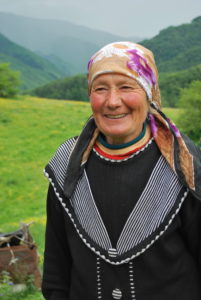 When we met Mariam Gogoch’uri, she was spending her summers in Khevsureti. She lived in Ch’ie, a small village of just four houses an hour’s hike up from the road. She said, “Some days it is hot and my cows go up to the forest. I sit out there, just sitting, with bread and cheese in my hand. Sometimes I think about the past. Sometimes I cry. And sometimes, all by myself, I sing!”
When we met Mariam Gogoch’uri, she was spending her summers in Khevsureti. She lived in Ch’ie, a small village of just four houses an hour’s hike up from the road. She said, “Some days it is hot and my cows go up to the forest. I sit out there, just sitting, with bread and cheese in my hand. Sometimes I think about the past. Sometimes I cry. And sometimes, all by myself, I sing!”
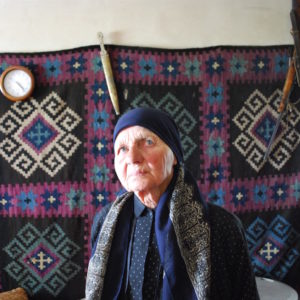 Tek’le Badrishvili was 85 when we recorded her singing. She was born and raised in Shuapkho, the largest village in the Pshavi gorge. As the daughter of a well-known Valley Elder (khevisberi), it was clear when speaking with her that she was a wealth of local knowledge. “I am eighty-five years old,” she said in 2012. “Eighty-five! That’s eighty-five years times twelve months a year. Think about that…! But you know, when I look out at the streets of my village, it feels like I was a child yesterday. Just yesterday. This is our ts’utisopeli.”
Tek’le Badrishvili was 85 when we recorded her singing. She was born and raised in Shuapkho, the largest village in the Pshavi gorge. As the daughter of a well-known Valley Elder (khevisberi), it was clear when speaking with her that she was a wealth of local knowledge. “I am eighty-five years old,” she said in 2012. “Eighty-five! That’s eighty-five years times twelve months a year. Think about that…! But you know, when I look out at the streets of my village, it feels like I was a child yesterday. Just yesterday. This is our ts’utisopeli.”
The songs recorded in the lowlands of Kartli and K’akheti reflect the diverse nature of the population today. These lowlands include villages of people not only from the eastern highlands but from other regions within Georgia like Svaneti, Imereti, and Ach’ara, as well as those originally from Azerbaijan and Dagestan. For example, Tamar Mgeliashvili’s village was settled by Pshavs in the early 20th century when the highlanders were encouraged to move to the plains where they were given land and opportunity. Others were relocated when natural disasters hit their villages. 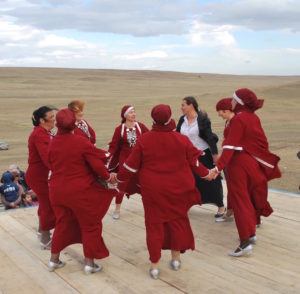 K’asletila Ensemble’s village Udabno is an example of such relocation. In 1987, when an avalanche devastated villages in the northwestern highland region of Svaneti, residents were moved from the high peaks of the Caucasus to a desert settlement on the border of Azerbaijan. Today, youth continue to move to the capital in search of opportunity, and many highlander families have moved to the lowlands where the weather is milder, the growing season longer, and there is more connection to the cities.
K’asletila Ensemble’s village Udabno is an example of such relocation. In 1987, when an avalanche devastated villages in the northwestern highland region of Svaneti, residents were moved from the high peaks of the Caucasus to a desert settlement on the border of Azerbaijan. Today, youth continue to move to the capital in search of opportunity, and many highlander families have moved to the lowlands where the weather is milder, the growing season longer, and there is more connection to the cities.
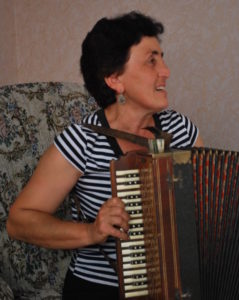 Although most songs on the site are in the Georgian language, the diversity of the population is expressed in the variety of dialects present, as well as songs in Bats, Udi, Chechen, Svan, and Megrelian languages. The songs in Bats (also referred to as Batsbi or Ts’ova-Tush) and Udi are especially important as both of these languages are referenced in UNESCO’s Atlas of the World’s Languages in Danger, the former as severely endangered and the latter as critically endangered. We are grateful to Ts’ova-Tush musician Meri Jikhoshvili from Zemo Alvani who, aside from being featured as a phenomenal singer and garmoni player, recorded pronunciation tracks for all of the songs in the Bats language.
Although most songs on the site are in the Georgian language, the diversity of the population is expressed in the variety of dialects present, as well as songs in Bats, Udi, Chechen, Svan, and Megrelian languages. The songs in Bats (also referred to as Batsbi or Ts’ova-Tush) and Udi are especially important as both of these languages are referenced in UNESCO’s Atlas of the World’s Languages in Danger, the former as severely endangered and the latter as critically endangered. We are grateful to Ts’ova-Tush musician Meri Jikhoshvili from Zemo Alvani who, aside from being featured as a phenomenal singer and garmoni player, recorded pronunciation tracks for all of the songs in the Bats language.
 We are also thankful to Olia Kumsiashvili from Zinobiani Village, (the only Udi village in Georgia), who shared four songs with us in her language.
We are also thankful to Olia Kumsiashvili from Zinobiani Village, (the only Udi village in Georgia), who shared four songs with us in her language.
In terms of instrumentation, many of the songs are accompanied by the panduri, a three-stringed, fretted, strummed lute found in all of the eastern regions. The site also features the salamuri (a flute from eastern Georgia), the doli (a double-headed hand drum), the ch’uniri (a bowed lute from Svaneti), the changi (a harp from Svaneti), the garmoni (a button accordion that plays an important role in the music of the Tush in Georgia), and the balalaika (a three-stringed, fretted, strummed lute with a triangular body played in the eastern highlands).
The songs themselves tell countless stories and span many genres. They include love songs, joke songs, patriotic songs, shepherd songs, dance songs and table songs. Ballads tell stories of heroic figures, myths, battles, hunts, and brigandage. There are many examples of songs based on the texts of beloved Georgian poets. Countless texts invoke the extreme beauty of Georgia’s rivers, mountains, and valleys and reference specific peaks, bridges, towers, shrines, and sacred spaces in mountains that hold enormous significance to villagers. There are songs that speak of the glories of hosting, or of hardships like being alone or being an orphan. And of course, countless songs that reference fading youth and our short lives on earth, our ts’utisopeli.
While most of the songs would fall within the category of secular, a number of pieces are linked to rituals that pertain, for example, to healing, the weather, mourning, and agricultural practices.
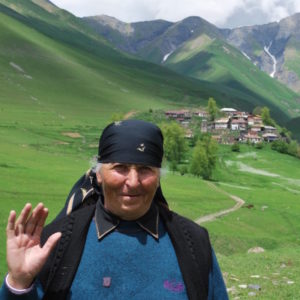 The site contains two versions of “alilos”, or Christmas carols traditionally sung in 3-voices. While alilos are sung all over Georgia, Liza Karchaidze’s example is from Khada Gorge in Mtiuleti where she grew up. Traditionally, singers would walk from house to house, felicitating families on Christ’s birth and receiving treats prepared in advance. Liza recalls traveling from door to door with her peers as a child, singing this song in return for fruits, nuts and eggs.
The site contains two versions of “alilos”, or Christmas carols traditionally sung in 3-voices. While alilos are sung all over Georgia, Liza Karchaidze’s example is from Khada Gorge in Mtiuleti where she grew up. Traditionally, singers would walk from house to house, felicitating families on Christ’s birth and receiving treats prepared in advance. Liza recalls traveling from door to door with her peers as a child, singing this song in return for fruits, nuts and eggs.
Didebai Ensemble from St’epants’minda, Khevi sings a ritual healing song, or “iavnana”, from their region. The Tbilisi-based women’s ensemble Eleoni performs “Ia P’at’nepio”, an iavnana from the western region of Samegrelo. Though iavnanas were traditionally sung by family members in the presence of a sick child in bed, they address spirits called bat’onebi (lords), who were thought to bring illnesses like measles and smallpox. It was believed that if hosted properly, these spirits could be pacified and vanquished though entertainment in the form of treats, bright decorations, and music.
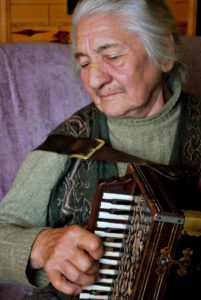 There are commemorative dirges, solo a cappella songs in remembrance of the departed. Laura Burduli from the Pshav village of Kvemo Kedi in K’akheti performs a song that comes from her grandfather’s time. On the site she recounts her family’s involvement in the history of the song, which was originally sung by a mother grieving her daughter’s suicide. Tek’le Badrishvili from Shuapkho, Pshavi sings a mourning song, the text of which says “Bich’ur, I look at the top of the cliffs / Your flock has no color / Your cows are asking for their milker.” There are also multiple examples of instrumental melodies of dirges from Tusheti: Ep’ro Torghvaidze as well as the Meri Jikhoshvili perform versions of these on the garmoni.
There are commemorative dirges, solo a cappella songs in remembrance of the departed. Laura Burduli from the Pshav village of Kvemo Kedi in K’akheti performs a song that comes from her grandfather’s time. On the site she recounts her family’s involvement in the history of the song, which was originally sung by a mother grieving her daughter’s suicide. Tek’le Badrishvili from Shuapkho, Pshavi sings a mourning song, the text of which says “Bich’ur, I look at the top of the cliffs / Your flock has no color / Your cows are asking for their milker.” There are also multiple examples of instrumental melodies of dirges from Tusheti: Ep’ro Torghvaidze as well as the Meri Jikhoshvili perform versions of these on the garmoni.
 Due to Georgia’s long agricultural history, it is not a surprise that there are many work songs in the traditional repertoire. As a result of urbanization, these songs are no longer sung by laborers in the field as they originally were. Luckily, eleven of them were documented in Georgia’s earliest sound recordings, made on the gramophone between the years of 1901 and 1914. “Urmuli” was one of these songs, and Rost’om Saginashvili from K’olagi, K’akheti sings a version of it on the site. The text references the long and harrowing journey made to the Aghzevan mine (today in Azerbaijan) to bring back salt. (It should be noted that Rost’om is also an important historical figure in Georgian folk song – His voice is on the 1977 recording of “Chak’rulo” that was sent to the cosmos on the Voyager!) Khornabuji, a men’s ensemble from Dedoplists’qaro, K’akheti sings another work song “Namgalo”, this one about reaping. The song talks of sharpening the sickle which “glitters gold.”
Due to Georgia’s long agricultural history, it is not a surprise that there are many work songs in the traditional repertoire. As a result of urbanization, these songs are no longer sung by laborers in the field as they originally were. Luckily, eleven of them were documented in Georgia’s earliest sound recordings, made on the gramophone between the years of 1901 and 1914. “Urmuli” was one of these songs, and Rost’om Saginashvili from K’olagi, K’akheti sings a version of it on the site. The text references the long and harrowing journey made to the Aghzevan mine (today in Azerbaijan) to bring back salt. (It should be noted that Rost’om is also an important historical figure in Georgian folk song – His voice is on the 1977 recording of “Chak’rulo” that was sent to the cosmos on the Voyager!) Khornabuji, a men’s ensemble from Dedoplists’qaro, K’akheti sings another work song “Namgalo”, this one about reaping. The song talks of sharpening the sickle which “glitters gold.”
Other examples (though this list is not comprehensive) of ritual songs on the site are: “Lile”, a hymn from Svaneti to the cult of the Sun; performed by K’asletila Ensemble, it is considered to be one of the oldest songs of the highland. “Elia”, a weather ritual song to invoke rain, is sung by Nelkarisi Ensemble of Shilda, K’akheti. Several Pshav and Khevsur singers perform “Gvrini”, a type of dirge tied to the act of haymaking in honor of the deceased. “Jvari Ts’inasa”, a wedding song found throughout the eastern highlands, is performed by four different artists.
 This project would never have been possible without the outstanding generosity of the many who fed and watered us, nourishing us with their songs along the way. Gogali Arabuli from Gveleti, Khevsureti sang: “Guests are the sun. Without guests, what is there to feast about? Without guests, bread and wine tastes sour, not sweet.” As guests in this unique and exceptional country, the people of these mountains and valleys included us in their daily lives, in their celebrations of successes as well as rituals to commemorate hardships. This sharing of abundance as well as loss left us very humbled by the true bounteousness of their spirits. It is a great honor to have been entrusted with these songs, the recordings of which were always intended to be shared with the world. We welcome you to visit the site, where you will be hosted by these voices and their stories. In doing so, you will be actively participating in keeping these songs for tomorrow while listening to them today.
This project would never have been possible without the outstanding generosity of the many who fed and watered us, nourishing us with their songs along the way. Gogali Arabuli from Gveleti, Khevsureti sang: “Guests are the sun. Without guests, what is there to feast about? Without guests, bread and wine tastes sour, not sweet.” As guests in this unique and exceptional country, the people of these mountains and valleys included us in their daily lives, in their celebrations of successes as well as rituals to commemorate hardships. This sharing of abundance as well as loss left us very humbled by the true bounteousness of their spirits. It is a great honor to have been entrusted with these songs, the recordings of which were always intended to be shared with the world. We welcome you to visit the site, where you will be hosted by these voices and their stories. In doing so, you will be actively participating in keeping these songs for tomorrow while listening to them today.
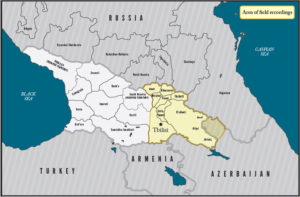
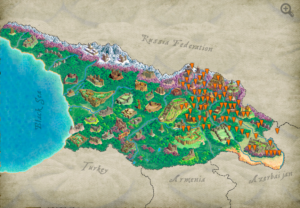

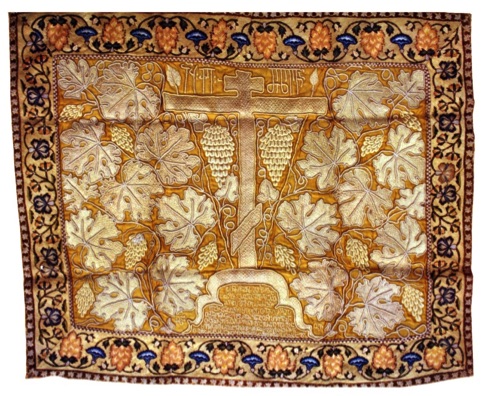
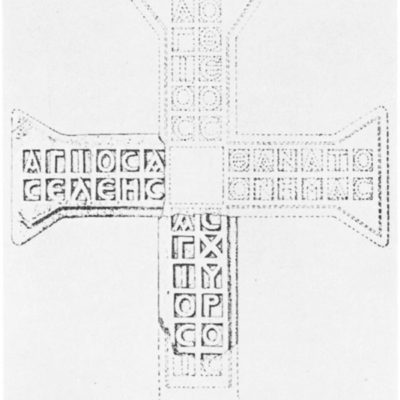
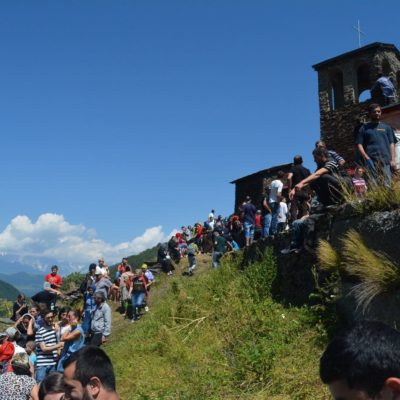
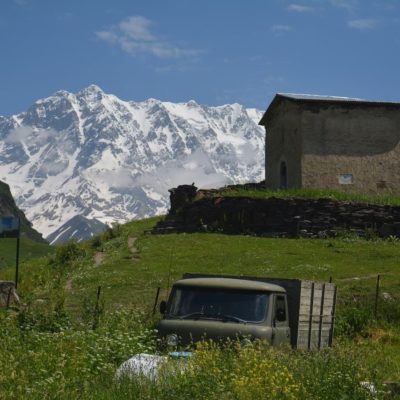
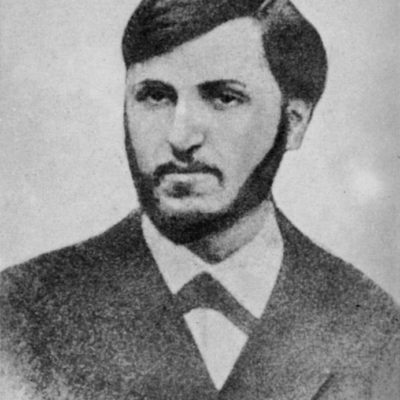
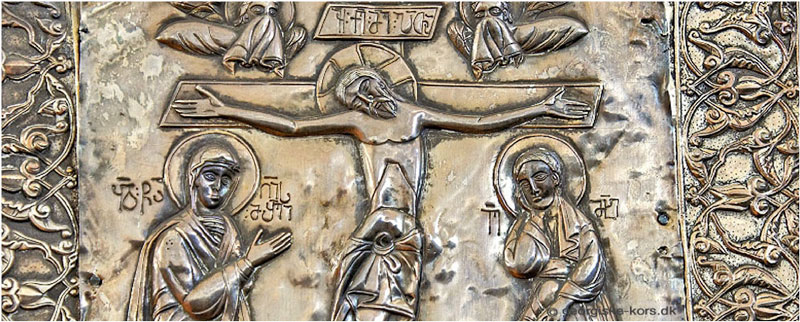

Leave a Reply